Excuse the lack of electrical engineering knowledge but I have an Arduino Uno microcontroller that I want to power with a coin cell battery.
The project will have 6 LED lights that will flash for a few seconds every few hours. My question is, what sort of coin cell battery would I need for this project? Also, how would I connect it to arduino? With something like this?
Would I require anything like resistors/transistors?
Here is a diagram of what I have so far:
 .
.
(Resistors are 1/4-watt 200ohm resistors)